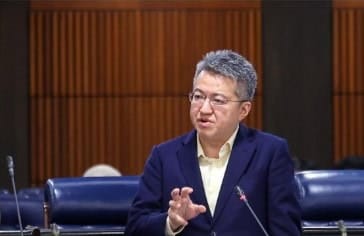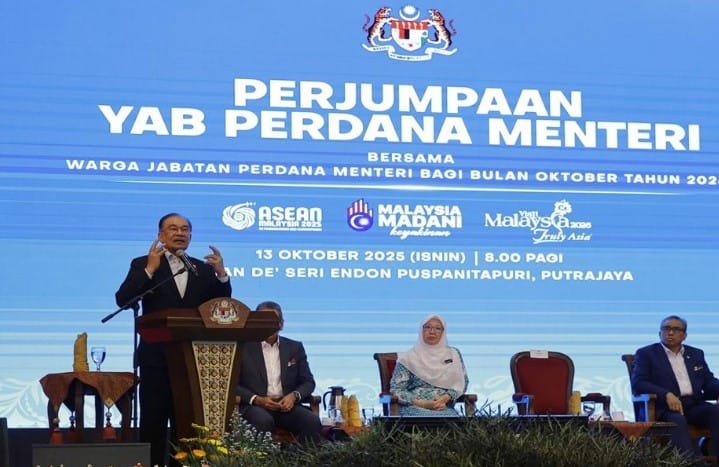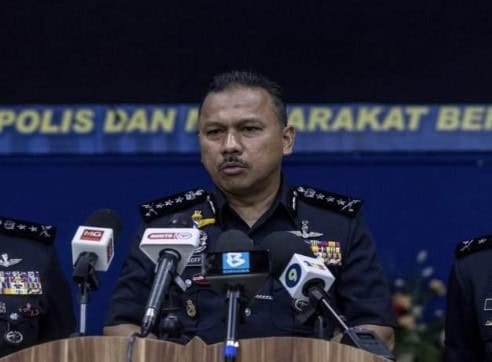
IPOH, June 16 — After being put on hold for almost 20 years, the proposal to make Kuala Gula-Matang wetlands as the eighth Ramsar site in the country has been raised once again, especially among nature lovers and environmentalists.
The objective is non-other than to protect biodiversity, especially to ensure that marine life will continue to be preserved and protected from any development activities that will damage the habitat and natural beauty here.
Moreover, the proposal which was earlier raised by the former Menteri Besar of Perak, Tan Sri Tajol Rosli sometime in 2002 is still relevant as this area meets the criteria set for a site of international importance for ecotourism and education.
After several areas in the country have been declared as Ramsar sites since 1994 with the first in Tasik Bera, Pahang, efforts to include Kuala Gula-Matang must be made a reality for the sake of environmental sustainability here, according to Malaysian Nature Society (MNS) president Prof Dr Ahmad Ismail.
“If this is realised, the Kuala Gula-Matang area will be able to increase the biological diversity of the coastal ecosystem as well as improve the income of the locals who are mostly fishermen,” he told Bersama.
Located about 50 kilometers northwest of Taiping and an hour’s drive from the city of Ipoh, Kuala Gula-Matang is part of the Paya Laut Matang Forest Reserve which consists of mangrove forests and muddy coastal areas with about 160 wildlife species.

More importantly, the site is a paradise for bird lovers and birdwatchers who come here every year to observe the thousands of migratory birds that stop by, especially around the month of August to April.
Kuala Gula is among the 55 areas in Malaysia identified as an Important Bird Area (IBA), through several criteria, including bird migration from cold areas, with no less than 62 of the 192 species of birds stopping to forage here.
As such, according to Ahmad, Malaysia, as one of the countries in the East Asian-Australasian Flyway Partnership (EAAFP) should see that Kuala Gula-Matang is declared a Ramsar site.
“Kuala Gula is located on an important coastal migratory bird route and Malaysia is the route for the East Asian-Australasian Flyway (EAAF),” he said adding the country became the 28th EAAFP partner on Nov 11, 2012.
Ensuring that Kuala Gula-Matang is declared a Ramsar site, is also in line with the Sustainable Development Goals (SDG) 2030 agenda which had set 17 goals to be achieved which includes environmental protection, he added.
In the case of wetlands of international importance, it is emphasised that physical development must be kept away from the coastal ecosystem so as not to negatively impact the location.
“For this purpose, the state government must plan on a creative strategic approach in developing this area for the benefit of the tourism sector, especially in the Kerian district and Perak as a whole,” he said.
“Environmental protection and economic development must go hand in hand. Kuala Gula-Matang is naturally endowed with quality mangrove forests and muddy beaches for fishing activities and cockle production is also very important here.
“The mangrove ecosystem in the Kuala Gula-Matang still provides a rich habitat. As such the management of the surrounding area must be looked into, especially in terms of pollution, hydrology, solid waste management and human activities,” he explained.
In addition, Ahmad, who is also a lecturer at Universiti Putra Malaysia, said publicity, education and involvement of all parties were necessary to make people aware that the wetlands must be protected and maintained to be included in the Ramsar list.
Meanwhile, Minister of Energy and Natural Resources (KeTSA) Datuk Seri Dr Shamsul Anuar Nasarahin in lauding the move on the proposal to get Kuala Gula-Matang into the Ramsar site listing said, this was subject to the Perak state government’s approval.
Shamsul Anuar in a media statement on June 14 said the nomination of Kuala Gula-Matang as a Ramsar site would not only boost the state economy but would also bring in funds from within and outside the country to finance studies and experts on wetland conservation.
“If this is agreed, the nomination shows the seriousness of the state government in its efforts to conserve wetlands and raise global interest in this area,” he said.
In this regard, KeTSA will hold further discussions on the proposal of the area as a Ramsar site with the Perak state government and if nominated, Kuala Gula-Matang will be the first Ramsar site in Perak and the northern region of Peninsular Malaysia.
The Ramsar Convention on Wetlands was signed on Feb 2, 1971 in Ramsar City, Iran, with the mission to ensure that wetlands are preserved and used sustainably through local and national actions and international cooperation towards achieving sustainable development throughout the world
Malaysia had been participating in the Ramsar Convention since Dec 10, 1994. Currently, seven wetlands in the country have been designated as Ramsar sites, namely Tasek Bera in Pahang, Tanjung Piai and Pulau Kukup National Parks as well as Sungai Pulai Forest Reserve in Johor, Kuching Wetlands National Park, Sarawak, Lower Kinabatangan-Segama and Kota Kinabalu Wetlands in Sabah.
All these sites are protected under forestry laws, state, national parks and land acts, either in the management of permanent forest reserves, state parks or protected wetlands.
— BERNAMA





More Stories
Fahmi Working To Secure Temporary Housing For Pantai Dalam PPR Fire Victims
Police Investigate Man Flying Jalur Gemilang Upside Down
KLIA Aerotrain Disruption Not Due To Mechanical Failure – Loke